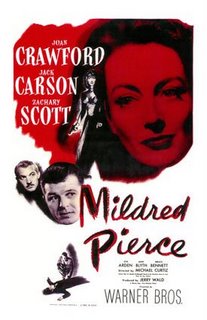 My library has got the entire series of books published by the Oxford University Press on the subject of seven deadly sins. I was naturally only interested in the only sin I commit (and I am being honest here), that is sloth (though I prefer the word Melancholy or Acedia more) of which I wrote earlier (I was a little disappointed with the light tone of the book). Even when I am afflicted by temptations of committing two other sins, Lust and Envy, they are invariably, and it doesn't take too long either, subsumed into a larger, global weltschmerz and are thus taken over by the sin of melancholy! Rest of the sins, that is Greed, Gluttony, Anger and Pride, I have hardly ever known in my life, specially the first two. But then I saw that the volume on Lust was penned by Simon Blackburn, who is a professor of philosophy at the Cambridge University and a wonderful writer, I decided to pick it up. I am glad I read it because it is a wonderful, entertaining and very informative book.
My library has got the entire series of books published by the Oxford University Press on the subject of seven deadly sins. I was naturally only interested in the only sin I commit (and I am being honest here), that is sloth (though I prefer the word Melancholy or Acedia more) of which I wrote earlier (I was a little disappointed with the light tone of the book). Even when I am afflicted by temptations of committing two other sins, Lust and Envy, they are invariably, and it doesn't take too long either, subsumed into a larger, global weltschmerz and are thus taken over by the sin of melancholy! Rest of the sins, that is Greed, Gluttony, Anger and Pride, I have hardly ever known in my life, specially the first two. But then I saw that the volume on Lust was penned by Simon Blackburn, who is a professor of philosophy at the Cambridge University and a wonderful writer, I decided to pick it up. I am glad I read it because it is a wonderful, entertaining and very informative book.
Blackburn states his aims clearly in the introduction to the book. He says that lust has been unfairly victimized by philosophers and thinkers and his task in this book is:
[...]to clean off some of the mud, to rescue it from the echoing denunciations of old men of the deserts, to deliver it from the pallid and envious confessors of Rome and the disgust of the Renaissance, to destroy the stocks and pillories of the Puritans, to separate it from other things that we know drag it down, and so to lift it from the category of sin to that of virtue.
And by the end, I have to say, he valiantly answers all the objections and convinces of the virtuousness of lust. My own personal view on the subject is quite dark and pessimistic. I won't go into the details here but it is basically a mix of Schopenhauer and Proust's ideas. So did my views change after reading this book? Well, not exactly. But I am fairly open to reading heftier volumes on similar lines, may be I will be convinced before it is too late (youth is already fading fast!). As for now, the status quo of melancholy torpor will continue and I will continue to see the trickeries of the evil "life-force" (the Schopenhauerian will-to-live) behind every attractive face! And also the costs of getting into a "venereal strife" (Aquinas's phrase by the way, not mine) are just too much for a man of limited emotional energies like me :)
Anyway coming back to the book, Blackburn predictably starts with the Greeks who were the easily the most knowledgeable people on this subject. He discusses Aristophanes's myth which Plato discusses in his Symposium. Aristophanes said that originally each of us formed a unity with someone else, either androgynous or same-sex. In this state each individual had four legs, four hands and two sets of genitals. Unfortunately this gave them enough vigor to challenge the God Zeus, who in response to this hubris cut them half, separating the two. He says that erotic desire is nothing but manifestation of the awareness of this incompleteness and we are condemned to seek our lost "other". Plato then discusses the dialogue between Diotima and Socrates to explain how ideal love means love of beauty and love of good, which he means to be the same thing. Of course beauty here is the Platonic abstraction, an idea, not the physical beauty. He also discusses Plato's theory of Human nature (the image of two horses and the charioteer) and offers well-known objections to this theory. I won't go into the detail here.
There are some funny lines in his chapter on Stoics and Cynics:
The Cynics ("dog philosophers") thought that too much song and dance was made about the whole thing. Diogenes thought that sex was most conveniently dealt with masturbation, which is easier than relying on other people: as Oscar Wilde later said, "cleaner, more efficient, and you get to meet a better class of person." But Diogenes too the further shocking step of arguing that no shame should be attached to the act, and hence no shame attached to doing it in public, which he promptly illustrated by repeated street performances.
He then mentions that, "centuries later St. Augustine, quite capable of swallowing miracles in other contexts, rejected this account."
The best and funniest part of the book is the section when he deals with Christianity and the medieval philosophy, which actually demonized lust with really stupid arguments, unlike their Greek predecessors. He pokes some gentle fun on St. Augustine, Thomas Aquinas and other obscure thinkers who devised and invented weird rationalizations to keep lust away from human affairs. After a long survey he finally concludes:
Eventually we get to a ladder. Virginity is best. After that, matrimony without sex is fine, and next best is matrimony plus pleasureless procreative activity. Procreative activity accompanied by pleasure is pretty regrettable; but worst of, because it would turn your wife into a whore and your home into a brothel, is to act for the sake of pure sexual pleasure.
And also how it explains the essentially misogynist character of Christianity (and indeed other religions too):
Naturally it is short step from disgust at the sexual act itself to disgust at women for inciting it, for receiving the foul male seed, for inciting men to take part in the whole teeming, liquid, swampy business.
The part which interested me most was where he answers the charges of radical feminists and anti-romance polemicists like Andrea Dworkin or Elfriede Jelinek. He cites a paper authored by Martha Nussbaum, who is a professor of philosophy at the University of Chicago, on the subject of "Objectification," in which she classifies different ways we reduce an individual to a thing. Her list contains seven items. First, there is instrumentality--using the other as a mere tool of one's purposes. Then, there is denial of autonomy--treating the other as not having a mind of their own, as lacking in self-determination. Third is inertness--treating the other as passive, as lacking in agency and perhaps also in activity. Fourth is fungibility--treating the other as interchangeable with objects of same type or other types. Fifth is violability--treating the other as lacking in boundary integrity, or as something it is permissible to violate, break-up, smash or break into. Sixth is ownership--treating the other as something that can be disposed of, bought or sold. Finally, there is denial of subjectivity--treating the other as something whose experiences and feelings (if any) need not be taken into account.
It is a very insightful list and after reading it, it doesn't take too long to understand the objections feminists have with male sexual desire and gender relations as they exist in society. Blackburn concedes that there are problems with lust here but manages to defend it quite well in the end. For example as for fungibility, we might be far away from the Aristophanes myth of the unique other for everybody, but there is something in desire which makes complete fungibility impossible. For example, the more the time one spends with one's partner, he/she becomes less and less fungible. He also cites Stendhal's theory of "crystallization", the process by which the subject assigns unique qualities to the beloved which exist only in its imagination. For more details
here is the wiki entry.For me personally, it is the last item on the list which is the most problematic. And here Proust comes into the picture. (Sadly Blackburn doesn't bring in Proust into the discussion here, though he discusses his ideas in a slightly different context elsewhere.) It is in the nature of desire itself to deny the other its autonomous subjectivity and impose one's own over the other's experiences. Solipsism comes with the package of Lust. Proust's novel contains dazzlingly complex and ultimately despairing analysis of this phenomenon of sexual solipsism, something that I understood very well, when I read it.
Blackburn skirts this problem by shifting the goalposts. He says that the goal of lust shouldn't be to bring in the merging of two different consciousness or some such abstract ideal. He cites a passage from Hobbes and says that reciprocation of pleasure is, and indeed it should be, the ultimate goal of lust (it is shallower than the ideal but it is the only thing we have got). He calls it "Hobbesian Unity" and explains it thus:
A pleases B. B is pleased at what A is doing, and A is pleased at B's pleasure. This should please B, and a feedback loop is set up since that in turn pleases A.
Hmph! This post has now become too long and my fingers are aching and I haven't yet come to Kant, Freud or talked about Stendhal (my favourite expert when it comes to the matters of the heart by the way). Or discussed the pros and cons of prostitution and pornography. May be some other time.
For now, since I have often been accused, not entirely unjustifiably I have to admit, of being a prude and of having a stiff upper lip when it comes to subjects discussed in the post, I am reproducing two risque paintings that Blackburn cites in the book. (The book contains photographs too.) First this painting by the medieval Florentine artist Agnolo Bronzino. It shows young Cupid cavorting with his mother Venus. The figures in the blackground are deceit, anger, jealousy, joy and fortune.
More details on Wikipedia. Blackburn says that Cupid's posture is awkward because he is trying to hide his erection!

This is another medieval sketch illustrating the apocryphal
story of Aristotle and Phyllis. I am sure Schopenhauer would have approved of this...













